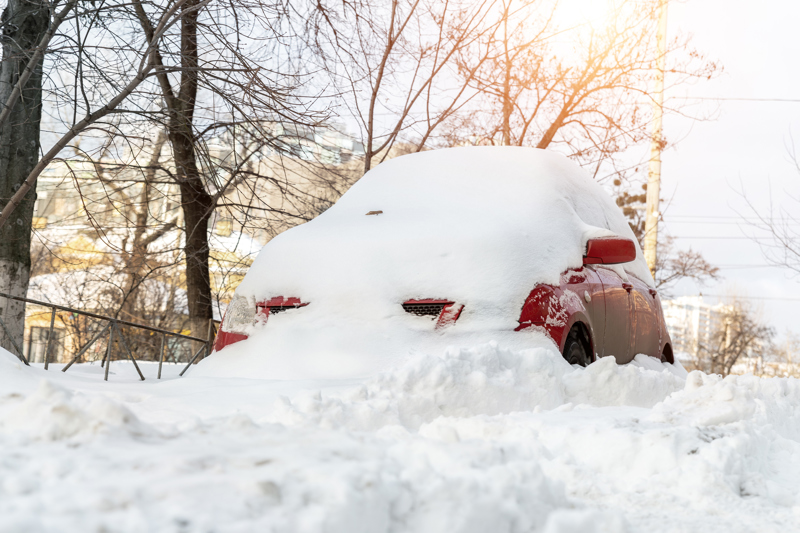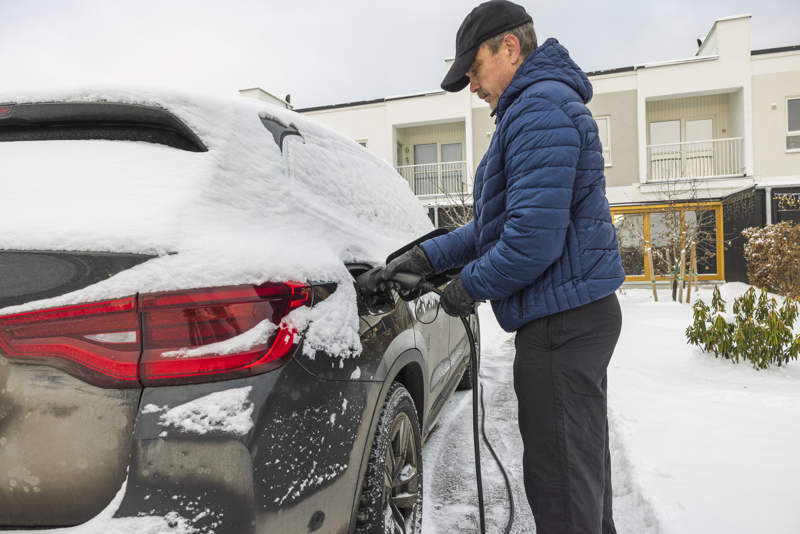
It’s been said that speed of charging and the cold are the two biggest enemies of battery electric vehicles (BEVs), with both having significant negative impacts on their range.
In 2020, the Norwegian Automobile Federation tested 20 BEVs in real-world winter conditions, and found that, on average, the range dropped by around 20%: a scenario which will be all too familiar to fleet operators across the UK.
The winter weather also slows down the speed at which a BEV can be charged and, although fleets can take actions to reduce the negative effect of the cooler conditions, such slowing cannot be eliminated.
“In practical terms, you just have to assume that in winter your range is a bit less, and the charging will take a little bit longer,” says Alex Johns, business development manager at electric vehicle (EV) battery data, health and warranty specialists Altelium.
Fleets should take this drop off in performance into account when procuring EVs, he says, and when planning their duty cycles.
“Fleets should not just plan for day one, they have to plan for the cold of winter, and the hot days of the summer.
“They also need to look at the issue when the battery has been in service for 18 months and it’s been working really hard and has degraded a bit.
“They should plan out the full lifecycle, both on a day-to-day basis, but also on a month-by-month and year-by-year basis.”
Here, we look at how and why cold temperatures affect the performance of an EV, as well as how a fleet decision-maker can minimise the impact.
Range anxieties
Last year, both Centrica and Royal Mail reported seeing up to a 40% drop in range for their BEVs in cold conditions.
“We introduced our first 100 EVs throughout 2018/19, so we’ve had them for a couple of winters now,” says Anna Pearson, fleet innovation and environment manager at Royal Mail.
“The colder and darker conditions mean we have to use the heaters and lights more, and we have seen a drop in range.
“We’ve probably seen a drop of about 25% to 30%. That, obviously, depends on how the vehicle is being driven as well.”
Earlier this year, What Car? carried out cold weather range tests on a number of BEVs and found that the conditions reduced range by up to 20% (see table, page 24) compared with summer performances, reflecting the findings of the Norwegian Automobile Federation.
The magazine’s research was carried out on a closed vehicle proving ground on a 15-mile route consisting of 2.6 miles of simulated stop-start urban traffic, four miles of steady 50mph driving, and eight miles driving at a constant speed of 70mph to simulate motorway journeys.
Altelium’s Johns says there are three main reasons why the battery performance drops: the chemical processes which take place within a battery, its thermal management system, and the energy used from the battery to heat the vehicle occupants.
“All chemical processes simply have preferred temperatures, and for EV batteries that is between 20oC and 30oC,” he says.
“When it gets colder, the chemical reactions are not as easy and that slows things down a bit, which has the effect of reducing range.”
Thermal management
BEVs are fitted with battery thermal management systems (BTMSs) which aim to manage the heat generated by battery components so it operates continuously under optimum temperatures.
Methods to control the temperature of a battery tend to follow two routes: passive or active.
Passive thermal management, as used in the Nissan Leaf, for example, relies solely on the thermodynamics of conduction, convection and radiation to control temperature, so it does not drain charge from the battery.
“On the downside, this is not going to help the battery very much in the early part of a journey, so the chemical processes have got to cope with the cold until it gets up to the right temperatures,” says Johns.
“When the vehicle is running, unless you’re doing something fairly extreme with it, it’s actually fairly easy for the battery because the chemical reactions create a little bit of heat anyway.”
In contrast, active BTMS based on forcing air or coolant through the battery structure are more common in BEVs, but require energy to run. The colder it is, the more energy is needed.
Toyota, for example, uses fans that circulate cold air through the battery cells, while Tesla and Audi use channels in direct contact with the cells through which a cooling fluid circulates.
Hybrid systems have emerged to take advantage of the benefits of active and passive systems, and show a much more effective performance than pure passive or active systems in thermally managing the battery pack.
However, their complexity and cost are a limiting factor for implementation in EVs.
“Where possible, store your EV in a temperature-controlled space such as a garage,” says LeasePlan.
“Charging the battery will also help to keep it warm, so it’s smart to carefully time charging, reaching optimum capacity just before you leave.”
As it is still connected to the grid, it does not use any energy stored in the battery to warm it to the optimum temperature, preserving range.
Heating the cabin
The biggest contributor to range loss in cold weather, however, comes from heating the vehicle’s interior.
In a petrol or diesel vehicle, waste heat is created by the engine which can be used to warm the cabin, but given that EVs do not run as hot as their internal combustion engine (ICE) counterparts, less ‘spare’ heat is available for this purpose.
To mitigate this, drivers are recommended to use a BEV’s app to warm the cabin while the vehicles is plugged in, so it is the right temperature before setting off, again using electricity from the grid and not that stored in the battery.
Pre-heating the cabin is particularly important for BEVs not fitted with a heat pump, which works by drawing excess heat from the electric drivetrain, distributing it around the interior of the car through the air-conditioning.
What Car?’s research found EVs fitted with heat pumps had significantly improved cold weather efficiency, with the five models equipped with them falling short of their WLTP range by an average 25.4%.
The five cars that used resistive heaters, such as those found in fan heaters or electric fires, suffered an average deficit of 33.6%.
Drivers can reduce the drain on the battery caused by heating the cabin through a few simple steps, says Seb Goldin, CEO of Red Corporate Driver Training, which provides a specific EV driver training course.
“Once the vehicle is up to temperature inside, turn off the heating,” he says. “Use features such as heated seats and steering wheels to keep warm.
“If the vehicle is fogging up, use the fan set to low to maintain outward visibility. If you need to use the heating, reduce the temperature you usually use by one degree and also the eco mode in the heating system to maintain efficiency.”
Goldin says driver behaviour also influences the range of a BEV in winter, as it does in warmer conditions.
“Our course focuses on adopting a smoother driving style to maintain momentum and avoid unnecessary acceleration and deceleration,” he adds.
“We encourage drivers to adopt a ‘flowing’ style when out on the road by becoming better at observing what is going on around them and by planning ahead to avoid scenarios such as coming to a dead stop.”
Drivers should also plan their charging needs in advance when setting off on a journey.
“Have a plan A, plan B and a plan C that’s 10-20 miles earlier than required,” says Goldin.
“Finally, even though EVs can see their range shorten in winter, it’s worth remembering this can provide a driver with the well-being break they should be getting anyway – even the smallest batteries are capable of 120 miles in the winter – so, after a two-hour drive, what’s wrong with a 30-minute break anyway?”

Charging
Charging a BEV at home in winter temperatures can add as much as two hours to the time it takes before its battery is full, says Rivus.
This increase in time also applies to rapid charge points, although the extended period is much shorter, maybe an extra 15 minutes.
“The further away from the ideal temperature of 20C, the slower this process will be,” adds Rivus.
Some of the extra time needed is due to the chemical reactions that happens in a lithium-ion battery, which slow in colder temperatures, but also the time an EV’s thermal management system takes to get the battery close to the optimum temperature.
This is why when an EV is plugged into a rapid charger it starts off slowly before the charging speed increases, before slowing down again to protect the battery when it reaches 80% capacity.
“If you force it to start at full speed straightaway, you may damage your battery because it’s the wrong temperature to receive the charge,” says Johns.
“Alternatively, you may have a delay of a few minutes while it sorts out the temperature of the battery, which is the more preferable route.”
The extra time needed can be minimised by charging the vehicle in a garage, or even under a cover, ensuring it stays warmer than if it was left outside, as well as preconditioning the battery before charging.
If this is not possible, and the vehicle needs to be charged at a public charge point, then Mer recommends waiting as long as your vehicle will allow before charging it.
This way the battery has time to get warm, making charging both faster and better for the battery’s condition.
Drivers should try to make sure their BEV’s state of charge never drops below 20% capacity in the winter, says Mer, with between 40% and 50% the ideal as this allows for some spare battery performance to cope with the impacts of the cold. Although best practice to minimise battery degradation is not to charge a battery to more than 80% regularly, drivers should consider charging it to more than this to give more leeway in the winter.
Safety
While the winter safe driving tips for ICE vehicles also apply to BEVs, the zero-emission vehicles have some different driving characteristics that mean other actions should also be taken.
As with ICE vehicles, smoother driving techniques will not only be more efficient on the road, but they will also be safer because avoiding harsh acceleration and braking reduces the risk of skids.
This is especially important when roads are wet, greasy and sometimes icy during winter months.
LeasePlan says new BEV drivers need to take particular care as their vehicle will respond differently under these conditions compared with a petrol or diesel vehicle.
It also says regenerative braking systems are less efficient in colder temperatures and strongly advises they are turned to low or off completely as it can lead to dangerous, unexpected handling characteristics.
“On slippery roads, the brake-like force to the wheel (of regenerative braking) can cause a loss of grip, reducing the tyre’s ability to help steer the vehicle,” it says.
“This can result in the vehicle going into an uncontrolled and potentially dangerous slide.”
Switch to eco mode
Venson recommends drivers use a BEV’s eco mode in the winter, as this often reduces power to the motor so the car accelerates more slowly, reducing the possibility of wheel spin.
Lower air temperatures can also result in lower tyre pressures, which mean they should be checked regularly to ensure they are adequately inflated, as an under-inflated tyre will increase drag and use more energy.
Winter tyres can be fitted to BEVs which will improve vehicle safety, but they will also increase energy consumption, so it is essential to be aware they will affect range before setting off on a long trip in the snow, says Rivus.




















Login to comment
Comments
No comments have been made yet.